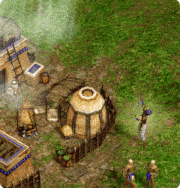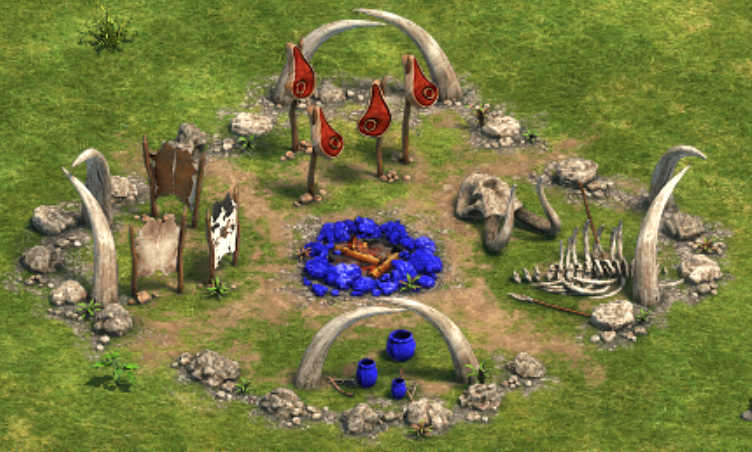Identify the kaf.
I don't care a jot what the Qurʾan says; it is a heap of garbage and nobody considers it even worth wiping our rear ends with.

We are living in a world of illusion
Last edited:
Identify the kaf.
I don't care a jot what the Qurʾan says; it is a heap of garbage and nobody considers it even worth wiping our rear ends with.


 www.thecoli.com
www.thecoli.com
I would be truly astonished if you were able to read ʾAromith at all, much less well enough to delve into the realm of Hebrew esoteric tradition. I also very much doubt you have sufficient background in t'na"ch, midroshim, g'moroʾ, et cetera, to be able to appreciate such writings. There are not many aspects of Judaism that are off-limits to ʿarélim, but this is one that is. Trust me—you will never be able to comprehend the issues dealt with in those texts, and it will only confuse or even upset you: for example, the ideas advanced in Sh'moth 20:18, M'lochim ʾAlaf 8:12 and Div'ré Hayyomim Béth 6:1 are discussed in detail, and these are topics that it would be better if you did not delve into too deeply; some concepts can be so disturbing to a mind that has not been properly educated to handle them that there have been cases of people losing their sanity after reading about them. I have nothing further to say on the subject and would earnestly urge you to follow suit.


The NearinAnother says that Xuanwu was originally a butcher who had killed many animals mercilessly. Yet as time passed, his conscience grew and he felt remorse for his actions. Upon repenting, he abandoned butchery and retired to a remote mountain for cultivation of the Tao.
One day, after assisting a woman in labor, as he cleaned her blood stained clothes in a river nearby, the words "Mysterious Heavenly Highest Deity" (玄天上帝 Xuántiān Shàngdì) appeared before him. The woman in labor was a manifestation of the goddess Guanyin. To redeem his sins, he dug out his own stomach and intestines and washed them in the river. The river then became dark and murky. After a while, the river flowed clear and pure once again.
Unfortunately, Xuanwu lost his stomach and intestines while he was washing them in the river. The Jade Emperor was moved by his sincerity and determination to clear his sins, and made him an immortal with the title of Xuántiān Shàngdì.
After he became an immortal, his stomach and intestines absorbed the essence of the earth. His viscera transformed into a demonic turtle and a demonic snake, who started to hurt people. No one could subdue the demonic animals. Eventually, Xuanwu returned to earth to subdue them. After defeating them, he later used them as his subordinates.

The only descriptions of 'angels' in the Tanach (e.g., Y'shaʿyohu, ch.6 and Y'hazqeʾl, ch.1) would have looked nothing like that!
If you were not familiar with that word, @MMS, you should have asked (Hillel 'the Elder' used to say לא הביישן למד 'A shy person [one who is too hesitant to raise his hand and ask a question] will never learn')—why should we always pander to the ignorance of the ʿarélim? The Tanach consistently refers to all non-Jews as הָעֲרֵלִים hoʿarélim ('the foreskinned ones'); see, for example: Shof'ṭim 14:3, 15:18; Sh'muʾel ʾAlaf 14:6, 17:26, 31:4; Sh'muʾel Béth 1:20; Div'ré Hayyomim ʾAlaf 10:4. The title of your message (in Hebrew characters, אֶרְאֶלִּים) is not found anywhere in Tanach, albeit the hapax legomenon אֶרְאֶלָּם ʾarʾallom (or, in modern Yisrʾeli Hebrew, ʾerʾellam), is (see Y'shaʿyohu 33:7)—but neither is related to עֲרֵלִים.
The letter ע ʿayin has no equivalent sound in English, however it is often transliterated ng—though it is only very approximately equivalent to the letters ng; it is actually more like a kind of 'gulp' made in the throat. For example, the initial 'G' in the English name of the town עַזָּה ʿAzzoh ('Gaza'). It is, in any case, derived more from the Arabic غزة Ġazzah (ghayn, zayn, taʾ marbuṭa) than from the pronunciation of the Hebrew name: ʿayin, zayin, heʾ. Still, it is common for S'faraddim to actually write 'ng' for the letter ע ʿayin. I was once in the 'Bevis Marks' Shaʿarei Shomayim Synagogue and, upon glancing at one of their mah'zorim (Festival Prayer Books), I was amused by the transliteration 'Shabungoth' (for Shovuʿoth).
 I am circumsized. I also am amused by that transliteration
I am circumsized. I also am amused by that transliteration 
In modern Hebrew, the phrase "tip of the Yod" refers to a small and insignificant thing, and someone who "worries about the tip of a Yod" is someone who is picky and meticulous about small details.
The Shasu are usually depicted hieroglyphically with a determinative indicating a land, not a people;[13] the most frequent designation for the "foes of Shasu" is the hill-country determinative.[14] Thus they are differentiated from the Canaanites, who are defending the fortified cities of Ashkelon, Gezer, and Yenoam; and from Israel, which is determined as a people, though not necessarily as a socio-ethnic group.[15][16] Scholars point out that Egyptian scribes tended to bundle up "rather disparate groups of people within a single artificially unifying rubric."

In Crete, three Dactyls bore names suggestive of healing: Paionios (later associated with Asclepius), Epimedes, and Iasios. It was said that they had introduced the smithing of copper and iron. Of Iasion it was told (Hesiod, Theogony 970) that he lay with Demeter, a stand-in for Rhea, in a thrice-ploughed field and the Goddess brought forth Ploutos, "wealth", in the form of a bountiful harvest. Zeus struck down this impious archaic figure with a thunderbolt. This is all of the public version of this myth that survives. Doubtless, initiates must have known more.
Once again, a translated term is interpreted too literally by someone who does not realize that the modern surgical procedure referred to today as 'circumcision' does not satisfy a male Jew's obligation to undergo b'rith miloh. In fact, if a mohel (expert 'circumciser') 'circumcises' a gentile male (apart from when it is done as part of the geruth or 'conversion' process), he omits the p'riyʿoh (tearing the membrane to expose the corona) and the m'ssissoh (applying suction to the wound to remove the uncongealed blood from it—this procedure is intended to prevent the excised prepuce from growing back). These two elements of the procedure are absent from medical circumcision, which is why the latter is not considered valid for the purposes of b'rith miloh. And, further, it does not matter if the prospective ger ('convert') has already been medically 'circumcised'—he must still undergo the ritual of b'rith miloh, because the Jewish operation involves additional steps.I am circumsized.
No; I am very particular about my homepage and suggested/recommended...did you ever watch the video in post 506?
We are living in a world of illusion
Seems like a mouthfulOnce again, a translated term is interpreted too literally by someone who does not realize that the modern surgical procedure referred to today as 'circumcision' does not satisfy a male Jew's obligation to undergo b'rith miloh. In fact, if a mohel (expert 'circumciser') 'circumcises' a gentile male (apart from when it is done as part of the geruth or 'conversion' process), he omits the p'riyʿoh (tearing the membrane to expose the corona) and the m'ssissoh (applying suction to the wound to remove the uncongealed blood from it—this procedure is intended to prevent the excised prepuce from growing back). These two elements of the procedure are absent from medical circumcision, which is why the latter is not considered valid for the purposes of b'rith miloh. And, further, it does not matter if the prospective ger ('convert') has already been medically 'circumcised'—he must still undergo the ritual of b'rith miloh, because the Jewish operation involves additional steps.
Consequently, while you may have undergone medical 'circumcision', you are not considered halochically circumcised—that is, circumcised within the context of Jewish jurisprudence (our legal system). I am not being needlessly pedantic, as we are very careful to recite in the blessing of the festive meal [in honor of the mohel]: עֲבֹדָתוֹ פְּסוּלָה אִם שְׁלָשׁ לֹא אֵֽלֶּה יַֽעֲשֶׂה לָהּ ('his service would be invalid if [one of] these three [parts of the ritual] he did not perform!'). When a mohel performs a circumcision (i.e., miloh), he performs two more procedures after the prepuce is excised, which are called (ii) p'riyʿoh and (iii) m'ssissoh: the former involves tearing the delicate membrane that remains after the prepuce has been cut away and pulling it downward in order to fully expose the corona of the glans penis, and the latter consists of applying suction to the wound to remove the excess blood (this is traditionally done by mouth, but can also be done using a glass instrument).
In short, p'riyʿoh and m'sissoh are not performed in medical circumcision (nor in ختان khitan, for that matter), and without it the procedure does not constitute halochic circumcision—it is incomplete and devoid of substance.
Note that ʿarélim does not only refer to non-Jews—it can equally refer to (and is the technical term for) Jewish children that have not been circumcised. Admittedly, though, I was using it in the former sense in my post #303.
 frankly i dont know the recipe of my circumcision but that my member has been stated to be joyous
frankly i dont know the recipe of my circumcision but that my member has been stated to be joyous 
No; I am very particular about my homepage and suggested/recommended...

The Little Known Biblical Curse of Egypt by IsaiahThe Shiva Purana mentions that after her suicide, Sandhya is reborn from the sweat of Daksha as Rati.[5] In some texts, Shiva is described as the father of Rati.[8]
The Harivamsa, an appendix to the epic Mahabharata, mentions that Kama and Rati have two children, Harsha ("Joy") and Yashas ("Grace"). However, the Vishnu Purana mentions that Rati, as Nandi, only has one son – Harsha.[9] The epics Mahabharata as well as the Ramayana, also attest to Rati being the consort of Kama.[10]
@*~bigg~vvvave~* @2stainzIdk enough to really say tbh, I've just stumbled unto sufi literature because it seems to fall under mysticism. Which is kinda where I'm at right now in my journey, the idea that knowing god and having a rich spiritual life has nothing to do with intellect or mind...it's a feeling, a knowing. Bless.
We are living in a world of illusionHa was said to protect Egypt from enemies such as invading ancient Libyans.[1] He is associated with Set, since Set represent the west of the Nile and they both have similar attributes - the desert.







 www.thecoli.com
www.thecoli.com

@*~bigg~vvvave~* @2stainz
We are living in a world of illusion
Perhaps you both can see something that I cant help but see
http://www.thealmightyguru.com/Wiki/images/8/89/Age_of_Empires_-_W32_-_Tech_Tree.png
It would appear all the problems intensify in the Iron age
in age of empires farms cost wood, in age of mythology farms cost gold
"Observe this Blue Orb"

Why does the "Bronze Sword" represent Themis? (Sacred Law)
Town Center (Age of Empires) | Age of Empires Series Wiki | Fandom

Hathor - Wikipedia
historians largely agree that "civilization" just "appeared"
Three Sovereigns and Five Emperors - Wikipedia
Why did you walk away from religion/god?
jahahahahahahahahaa*
ideas can be wildEvil (Pol)lution is a mystery





Although the meaning of his name remains uncertain, the Egyptians in the Pyramid Texts linked his name to the anguished cry of Osiris to Isis 'Sy-k-ri' ('hurry to me'),[1] or possibly skr, meaning "cleaning the mouth".[2] In the underworld, Seker is strongly linked with two other gods, Ptah the Creator god and chief god of Memphis, and Osiris the god of the dead. In later periods, this connection was expressed as the triple god Ptah-Seker-Osiris.
The Faiyumic Coptic form ⲥⲓⲭⲟⲗ is possibly preserved in a personal name ⲥⲉⲛⲥⲓⲭⲟⲗ "daughter of Sokar"

@Sccit @Koichos
Genesis 11:6-7
Shin (letter) - Wikipedia
The 13th-century Kabbalistic text Sefer HaTemunah, holds that a single letter of unknown pronunciation, held by some to be the four-pronged shin on one side of the teffilin box, is missing from the current alphabet. The world's flaws, the book teaches, are related to the absence of this letter, the eventual revelation of which will repair the universe.
four pronged shin
I sat as סַנְדָּק for all my sons, and I found it to be a wonderful experience every time.Seems like a mouthful
Laughing my hamor off!frankly i dont know the recipe of my circumcision but that my member has been stated to be joyous
I am surprised that nobody else has yet pointed out that the term noviʾ in D'vorim 18:15 and also in 18:18 is an implied plural similar to an ʾis'm ʾal-jin's in the Qurʾan (a term for a noun that is singular in form but plural in meaning).